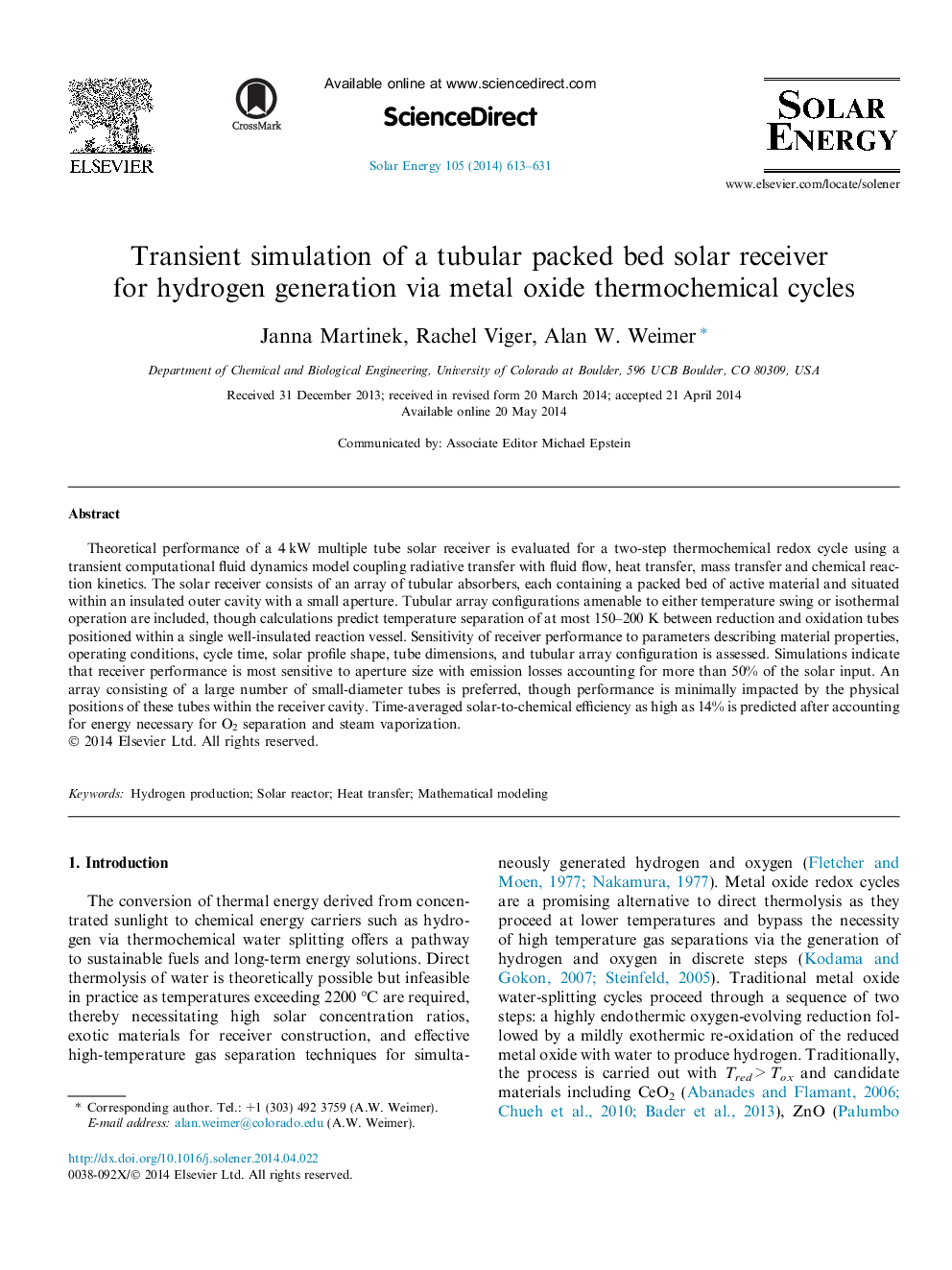| Article ID | Journal | Published Year | Pages | File Type |
|---|---|---|---|---|
| 1550081 | Solar Energy | 2014 | 19 Pages |
Abstract
Theoretical performance of a 4Â kW multiple tube solar receiver is evaluated for a two-step thermochemical redox cycle using a transient computational fluid dynamics model coupling radiative transfer with fluid flow, heat transfer, mass transfer and chemical reaction kinetics. The solar receiver consists of an array of tubular absorbers, each containing a packed bed of active material and situated within an insulated outer cavity with a small aperture. Tubular array configurations amenable to either temperature swing or isothermal operation are included, though calculations predict temperature separation of at most 150-200Â K between reduction and oxidation tubes positioned within a single well-insulated reaction vessel. Sensitivity of receiver performance to parameters describing material properties, operating conditions, cycle time, solar profile shape, tube dimensions, and tubular array configuration is assessed. Simulations indicate that receiver performance is most sensitive to aperture size with emission losses accounting for more than 50% of the solar input. An array consisting of a large number of small-diameter tubes is preferred, though performance is minimally impacted by the physical positions of these tubes within the receiver cavity. Time-averaged solar-to-chemical efficiency as high as 14% is predicted after accounting for energy necessary for O2 separation and steam vaporization.
Related Topics
Physical Sciences and Engineering
Energy
Renewable Energy, Sustainability and the Environment
Authors
Janna Martinek, Rachel Viger, Alan W. Weimer,
